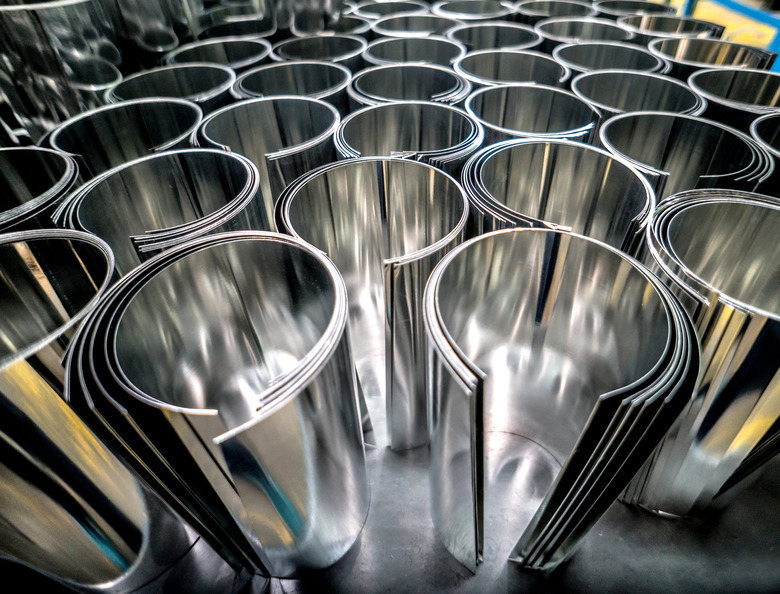The Effects Of Acid On Aluminum
Different aluminum grades react differently to chemicals such as acids. Certain acid types will not harm some aluminum grades, while other acid types will. Depending on the aluminum grade and the acid type, acidic solutions can sometimes remove other substances from aluminum machine parts without damaging the metal.
Acids and Aluminum
Acids and Aluminum
According to the U.S. Motors's Table of Corrosive Chemicals, hydrochloric and sulfuric acids are known to damage aluminum parts in motors, drives and gears. You can reduce hydrochloric acid's effects through dilution. Very weak solutions of sulfuric acid will not damage aluminum parts if you keep them at room temperature. Boric, carbonic, lactic and nitric acids usually do not cause significant damage to aluminum. Chromic acids cause moderate damage, depending on both the concentration of the acidic solution and the temperature.
Acid for Cleaning Aluminum
Acid for Cleaning Aluminum
You can sometimes use nitric acid to remove other substances such as gold from aluminum machine parts. The acid dissolves the gold plating but leaves the aluminum undamaged. However, nitric acid has been known to damage high-grade aluminum such as 7075 or 2024 aluminum alloy. You can also use diluted mixtures of water and sulfuric acid for the same purpose.
Acid on Aircraft Aluminum Effects
Acid on Aircraft Aluminum Effects
The U.S. Department of Transportation conducted experiments to determine if a spill of hydrochloric acid could eat through the aluminum skin of an airplane and cause it to fall apart. The experiment concluded that the interior skin of the airplane could resist the acid as long as it was coated with epoxy. However, any scratch in the epoxy coating would be badly damaged by the acid, causing holes to develop. In addition, the hydrochloric acid was able to burn through the ribs of the airplane. The experiment did not clearly establish that a hydrochloric acid spill would cause the failure of the aircraft.
Acid Rain Effects
Acid Rain Effects
Acid rain can have an effect on the aluminum ions normally present in the soil. When too much acid rain comes into contact with these aluminum ions, they dissolve and become toxic to plants and trees in the area. When the tree absorbs the aluminum through its roots, the root is prevented from absorbing sufficient calcium. The tree can suffer from stunted growth as a result. The aluminum ions can also poison the microorganisms in the area, preventing them from performing their usual function of disposing of dead leaves and releasing the nutrients in them.
Cite This Article
MLA
Thompson, Scott. "The Effects Of Acid On Aluminum" sciencing.com, https://www.sciencing.com/info-8642933-effects-acid-aluminum/. 24 June 2011.
APA
Thompson, Scott. (2011, June 24). The Effects Of Acid On Aluminum. sciencing.com. Retrieved from https://www.sciencing.com/info-8642933-effects-acid-aluminum/
Chicago
Thompson, Scott. The Effects Of Acid On Aluminum last modified March 24, 2022. https://www.sciencing.com/info-8642933-effects-acid-aluminum/
